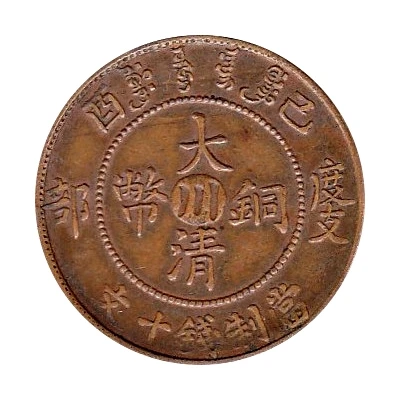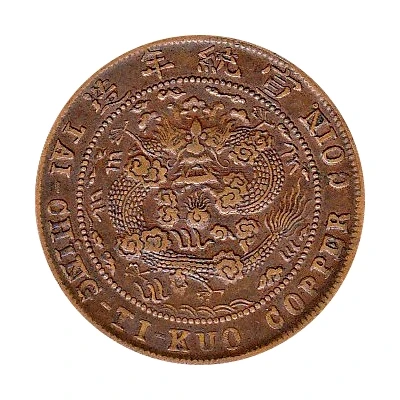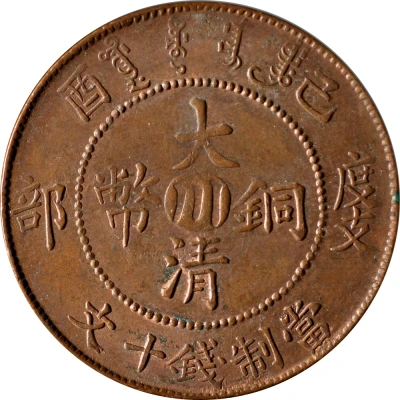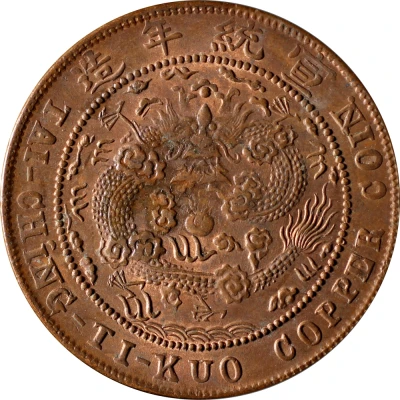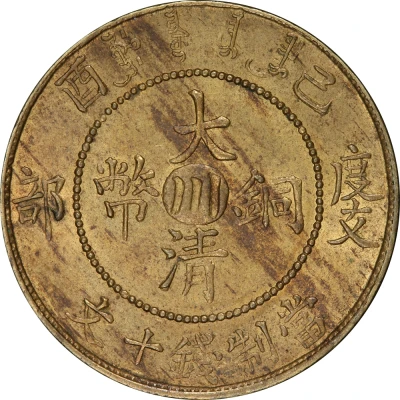
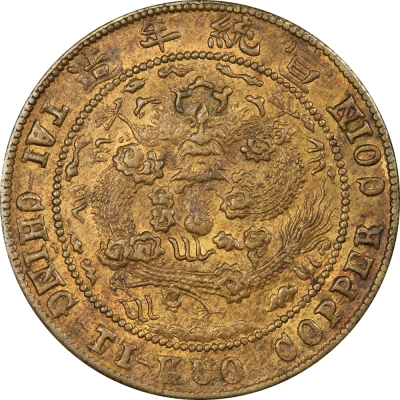

© PCGS
10 Cash - Xuantong Ministry of Revenue; Manchu: Xuantong; brass
46 (1909) year| Brass | - | 28 mm |
| Issuer | Empire of China |
|---|---|
| Emperor | Qing dynasty › Xuantong (宣統帝) (1908-1912) |
| Type | Standard circulation coin |
| Year | 46 (1909) |
| Calendar | Chinese cyclical (cycle starting in 1864) |
| Value | 10 Cash (0.01) |
| Currency | Yuan (1903-1912) |
| Composition | Brass |
| Diameter | 28 mm |
| Shape | Round |
| Technique | Milled |
| Orientation | Medal alignment ↑↑ |
| Demonetized | Yes |
| Updated | 2024-10-04 |
| Numista | N#243649 |
|---|---|
| Rarity index | 100% |
Reverse
Dragon with pearl at centre with Chinese ideograms above and English legend below.
Scripts: Chinese (traditional, regular script), Latin
Lettering:
造年統宣
TAI-CHING-TI-KUO COPPER COIN
Translation:
Made in the reign of Xuantong (Emperor)
Copper coin of the Great Qing Empire
Edge
Plain
Interesting fact
The Xuantong coin was the last imperial coinage system used in China before the fall of the Qing dynasty in 1912. It was introduced by the Guangxu Emperor in 1909 and was meant to replace the old system of cash coins that had been in use for centuries. The Xuantong coin was made of brass and had a standardized design, with the Manchu inscription "Xuantong" on one side and the Chinese characters "大清通寶" (meaning "Great Qing currency") on the other. The coin was issued in denominations of 1, 2, 5, and 10 cash, with the 10 cash coin being the largest denomination. Despite its introduction, the Xuantong coin did not gain widespread acceptance and was eventually replaced by the Republican dollar after the fall of the Qing dynasty.
